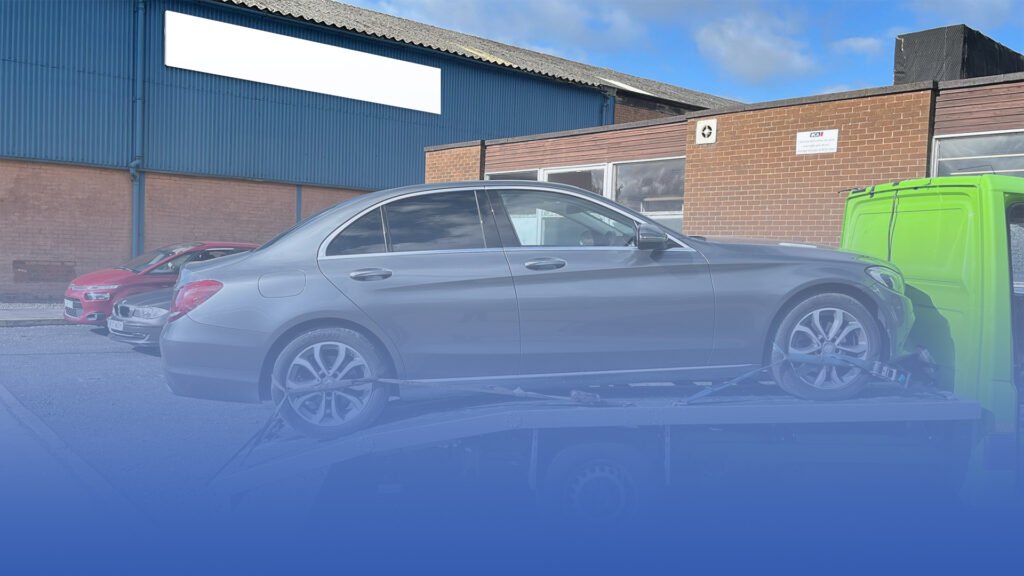Used Car Handover Checklist: Driver’s Vehicle Inspection at Dealer
When preparing for a vehicle handover at home, it’s essential to ensure the car is in good condition and meets all necessary specifications. As a buyer, verify the vehicle identification number (VIN) against the registration document to confirm its authenticity. Additionally, review the full-service history to verify that the car has been well-maintained, and inquire about the mileage and the number of previous owners to gauge its history. Ensure the vehicle has a valid MOT certificate and is roadworthy. Don’t forget to inspect the vehicle’s cleanliness, including checking the locking wheel nuts and handbrakes for proper function, which is especially important if the car has been well-maintained. It’s also a good idea to discuss payment methods, such as bank transfer, and understand the terms and conditions of any finance agreement if applicable. Lastly, confirm that you have the correct insurance in place and that the registered keeper’s details match those on the logbook for your peace of mind, especially if the car has been well-maintained.
Importance of a used car handover Checklist
When you pick up your new vehicle, it’s essential to inspect it thoroughly to ensure it is in good condition and free from potential issues. Before finalizing the handover, please also verify the registration certificate and check the vehicle’s history to ensure it aligns with the information provided by the dealership. It’s crucial to confirm whether there are any outstanding finance payments linked to the vehicle, as this may affect your ownership rights, particularly if the car has been well-maintained. Furthermore, consult with your insurer to ensure that the vehicle is adequately covered from the moment of handover. Car manufacturers often provide guidelines on checking performance cars, so it’s advisable to follow those to guarantee that your new purchase meets all necessary standards. Lastly, remember that the process should be conducted with entities that are authorized and regulated by the Financial Conduct Authority to ensure a smooth and secure transaction.
Ensuring a Smooth Vehicle Handover
Handing over a car is a necessary process that requires accuracy and care. The handover of a vehicle should be carefully documented and conducted in accordance with the appropriate steps. It is crucial to report the car’s condition, include essential contract terms, and adhere to legal formalities. A vehicle handover protocol helps prevent misunderstandings and disputes while creating a clear record of the car’s condition before the handover. Remember that transparency and honesty in this process contribute to a positive relationship between the parties involved and allow for a smooth car handover.

Benefits of Using a Checklist for Drivers
When performing a vehicle handover at home, it’s essential to ensure that the right car is being transferred to the new owner. One of the key aspects to check is the vehicle’s documentation, including the DVLA registration details, which confirm the owner’s identity and ownership history. It’s also crucial to inspect the vehicle’s condition, verifying that it matches the description provided beforehand before handover. Ensuring that all necessary paperwork is in order can prevent future complications and ensure that both parties are satisfied with the transaction. A vehicle handover protocol helps prevent misunderstandings and disputes while creating a clear record of the car’s condition before the handover.
Avoiding Common Pitfalls in Used Car Transactions
When conducting a vehicle handover at home, it’s crucial to avoid common pitfalls in used car transactions, especially if the car has been well-maintained. Start by thoroughly inspecting the vehicle’s exterior and interior for any signs of damage or wear. Ensure that all essential documents, including the title, registration, and maintenance records, are available and in order. Verify that the vehicle’s features, including lights, brakes, and tires, are functioning correctly. Additionally, discuss any warranties or return policies with the seller to ensure clarity. Taking these steps will help you navigate the process smoothly and make an informed decision.
Preparing for the Vehicle Handover
When preparing for the vehicle handover at home, it’s essential to check several critical aspects to ensure a smooth transition. Start by verifying the vehicle’s documentation, including the title, registration, and insurance details. Inspect the car for any signs of damage or mechanical issues, ensuring that it meets the agreed-upon condition. Additionally, confirm that all accessories, such as keys and manuals, are present. It’s also advisable to take a test drive to assess the car’s performance and functionality. By thoroughly reviewing these elements, you can facilitate a successful handover process.
Documentation Required for Used Car Purchase
Please provide the necessary documentation and paperwork to confirm that you are the owner of the vehicle, including its service history and roadworthiness. You’ll also need to bring your driving license to match the address on the V5C. If you’re selling or part-exchanging your vehicle, you should provide the latest MOT certificate. Ideally, you should also give any past MOT certificates to show when each MOT was carried out and any advisories issued. Could you please ensure that, if your car has one, you bring the car’s original service book with stamps from an approved garage or dealer, showing that the vehicle was serviced at the required intervals?
You should also be able to keep and supply any documentation, invoices, and receipts for additional work you have carried out on the vehicle, such as new tyres. When handing over your car, you’ll need to provide both the main and any spare keys you may have. If the vehicle you’re selling was purchased with financing, and you still have some of the balance to pay off, you’ll need to provide a finance settlement letter from your lender. When selling or part-exchanging your car, it’s essential to ensure you have the key to pass on to the dealer or new owner, as this can help avoid any future issues, especially if the car has had multiple previous owners. You’ll also need to bring proof of your address, which must match all other documents.
Understanding Road Tax and Other Fees
If you have just purchased a brand-new vehicle, we will, of course, ensure that it is taxed before you take delivery. If you have purchased an Approved Used vehicle, you are responsible for ensuring the vehicle is taxed before it is driven on a public highway. This process can be easily completed online and can be done in advance. Alternatively, we are happy to assist you in completing this during your handover. If we have arranged finance for you, we will need a signed, valid Driving license and your current address at all times.
Setting Up for a Test Drive
Conduct a short test drive with the buyer/renter to confirm that the car is functioning correctly and as described. When preparing for a vehicle handover at home, it’s essential to ensure everything is in order before taking your new car for a test drive. Begin by checking the vehicle’s documentation, including the owner’s manual and service records, to confirm its history and maintenance status. Inspect the exterior and interior for any damage or wear that may have occurred since your last assessment. Ensure that all necessary accessories, such as spare tires and tools, are present and in good working condition for your new car. Additionally, verify that the fuel level is adequate for the test drive, and familiarise yourself with the vehicle’s controls to enhance the overall experience. A thorough preparation will help facilitate a smooth handover process and ensure confidence in the vehicle’s condition, especially if the new car has been well-maintained.
Key Items to Inspect During the Handover
When preparing for a vehicle handover at home, it’s essential to focus on key items to inspect to ensure a smooth transition, particularly if the car has had many previous owners. Start by checking the vehicle’s exterior for any scratches or dents that may have been overlooked. Next, inspect the interior for cleanliness and the condition of the seats, ensuring that all personal belongings are removed. Please ensure that all essential documents, such as the owner’s manual and service records, are present. Additionally, check that the fuel tank is adequately filled and that the tires are in good condition, including proper inflation. Finally, make sure that all electronic components, such as lights and the sound system, are functioning correctly, providing a comprehensive overview of the vehicle’s state before the handover is finalized.

Exterior and Interior Condition Checks
Before handing over the car, thoroughly clean it both inside and outside to ensure the new car looks its best. Check glove compartment, seat pockets, and other storage areas. Look in the trunk and under the seats for any items that many previous owners may have left behind. Ensure that the technical condition matches the description to avoid misunderstandings. Describe the car’s technical condition in detail, including any existing damages or flaws.
Mechanical and Technical Assessments
Check the operation of all car components and features, including the air conditioning, audio system, lights, and wipers. Press the brake pedal to ensure it feels firm and responsive. Check the accelerator pedal for smooth operation. Test the brakes by driving at a slow speed and applying the brakes gradually, particularly if the car has had multiple previous owners. Test the accelerator by accelerating smoothly and checking for any delays. Listen for any strange noises while driving. Pay attention to any vibrations felt through the steering wheel or pedals.
Confirming Vehicle History and Title Status
During a vehicle handover at home, it is crucial to verify the vehicle’s history and title status to ensure a seamless transaction. Checking the vehicle history report will provide insights into previous ownership, accident history, and any outstanding recalls. Additionally, verifying the title status is crucial to ensure that the seller has the legal right to transfer ownership and that there are no liens against the vehicle. This step helps protect the buyer from potential legal issues and ensures a transparent exchange.
Final Steps in the Handover Process
During the vehicle handover at home, it is essential to focus on several final steps to ensure a smooth transition. Start by verifying all necessary documentation, including the vehicle’s title, registration, and insurance papers. Next, inspect the car for any existing damage and ensure that all keys, including spares, are handed over, especially if the car has had many previous owners. Additionally, please familiarize yourself with the vehicle’s features, such as the infotainment system and safety equipment, to fully understand its operation. Don’t forget to check the fuel level and confirm that any agreed-upon maintenance or servicing has been completed before finalizing the handover.
Completing the Transaction and Payment
Make sure you use your new car’s registration number as the payment reference. Debit Card – All card payments must be Chip & PIN supported, up to a maximum of £ 1,000. If you choose to pay using cash, due to money laundering legislation, we only accept a maximum of £ 1,000 in any one transaction.
Signing Ownership Documents
Both parties involved should sign the handover form, which serves as the official confirmation of the car’s condition and handover conditions. Finance Documents must be signed before collection to facilitate clearance through the finance company. Review the checklist to ensure all items have been checked. Sign the checklist to confirm completion of checks, ensuring that the new car meets all necessary standards. Ensure that you date and time the checklist for record-keeping purposes.
Post-Handover Checklist for Drivers
Remove any personal belongings and double-check before handing over the vehicle. Present the checklist and vehicle handover form to the receiving driver or supervisor. Request them to sign and date the form as confirmation of receipt, essential when dealing with a new car. Keep a copy of the signed form for your records.
To stay compliant with the UK transport regulations, every business should stay up to date with the official guidance published by the UK government on trade plate vehicle use (see the latest document here: https://www.gov.uk/vehicle-registration/trade-licence-plates).
For more information on our vehicle delivery process, please visit our Service Page at www.ukvehicledelivery.co.uk.







